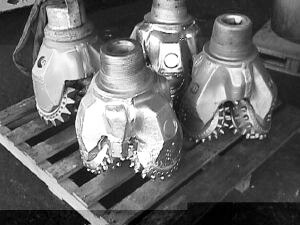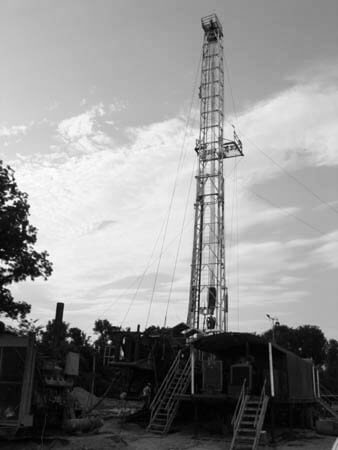Leasing Wells
When an area is discovered to be likely to produce oil or gas the right to drill must be secured. Usually securing the right to drill involves leasing the mineral rights from the owner of the land. Some owners may have ownership of all interest in the land, other times they may own just the mineral rights. In exchange for the right to drill and extract oil and gas from the property most owners are paid a sum called a “lease bonus”. Other arrangements would dictate a “hole bonus” for every well drilled on the property of the land owner. Typically the land owner will also retain a royalty on any production. A portion of the production will be given to the land owner without incuring production costs.
As might be expected the costs of production are the responsibility of the driller. Holding the right to extract hydrocarbons and bearing the costs to produce is referred to as working interest. Often the procurement of the lease from the land owner is arranged by a lease broker who will offer and assign the lease to an operator or individual investors. The lease broker typically retains an overriding royalty on the working interest as compensation for services rendered.
Drilling
Once all rights to drill on a property have been obtained drilling may begin. Most drilling done today is rotary drilling which operates on the principle of boring a hole by continuously turning a bit with downward pressure applied. A drilling rig with it’s derrick and attendant machinery is really there to make the bit effective. There are many different designs for bits. One common type consists of a housing and three interlocking movable wheels each with sharp teeth. The bit is hollow and extremely heavy. A drill stem composed of hollow lengths of pipe extend to the land’s surface connecting the bit to the motor driving it’s rotation. As the bit moves deeper and deeper lengths of pipe are added at the top of the drill stem.


Of importance is also the drilling fluid. Without it a bit would prove quite useless. Known as mud, drilling fluid is a prepared chemical compound that is circulated continuously down the drill pipe where it bathes the bit before being pushed back to the surface between the pipe and the bore wall. The mud is then purified and recycled in a surface pit. The flowing mud compound simultaneously removes cuttings from the hole while lubricating and cooling the bit. The downward pressure and heat from the friction of cutting through solid rock are intense. In addition there is often natural heat and pressure in deep strata to contend with. All of these factors make the flow of the drilling fluid of critical importance. Without it a bit would break or melt under the extreme conditions. Mud will also aid in preventing a blow out if the bit puntures a high pressure formation deep below the Earth’s surface.


